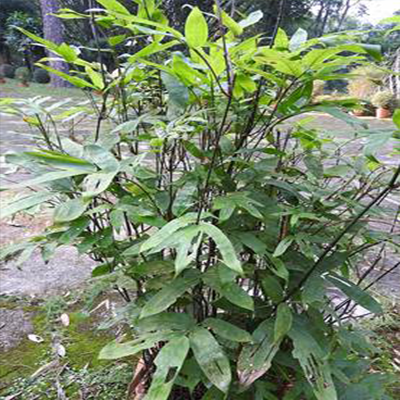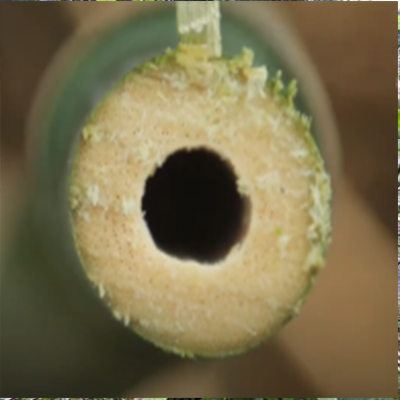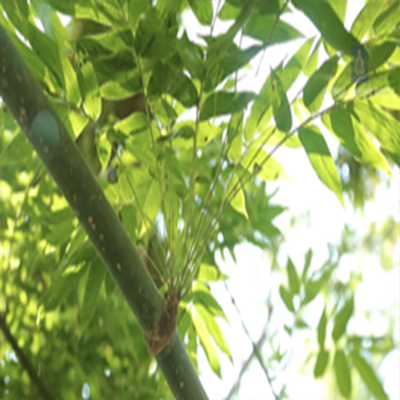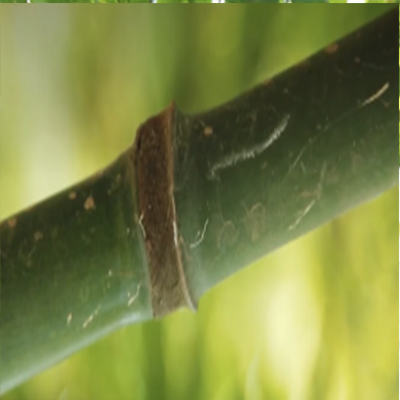28. Melocanna baccifera (Roxb.) Kurzr
Local names
Assam - Tarai;
Bengal - Muli;
Manipur - Moubi;
Nagaland - Turiah;
Dhaka - Nali.
General description
Melocanna baccifera is an evergreen bamboo with an elongated rhizome that produces single culms arising at a distance of about 60 cm apart and reaching a height of 10 - 20 metres. The species can be recognised easily by diffused clump habit, having culm-sheath straight for about two-third of the way up, then once or twice transversely waved with subulate flagelliform blade. The thin-walled culms have a diameter of 50 - 90mm, with internodes 30 - 60cm long. It is an aggressive bamboo, easily occupying large open areas, due to its vigorous long rhizomes and, when fruiting, due to its easily germinating fruits. Culm-sheaths 10-15 cm long, yellowish green when young and yellowish brown on maturity. Young shoots smooth, light purple or purplish green. Leaves 15-30 cm long, 2.5-5 cm broad, oblong. Inflorescence a large compound panicle of one-sided drooping, spicate branches, bearing clusters of 3 to 4 spikelets. Caryopsis very large, fleshy, pear-shaped.
Habit and Habitat
Tree form. It grows almost equally on the well-watered sandy clay loam, alluvial soil and on the well drained residual soils consisting of almost pure sand even at the summits of the low sand stone hills.
Distribution
Bangladesh, Myanmar, India- Assam, Manipur, Meghalaya, Mizoram, Tripura, West Bengal and other parts of Eastern India in the plains and low hills.
Uses
Fruits are edible. Used for building houses, for making woven ware and an important source of superior paper pulp. Highly suitable for kraft paper making. The culms are used for making floats to transport wooden logs.



